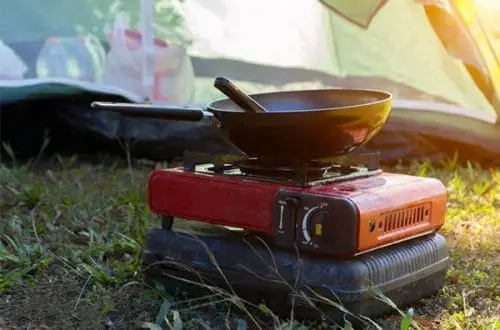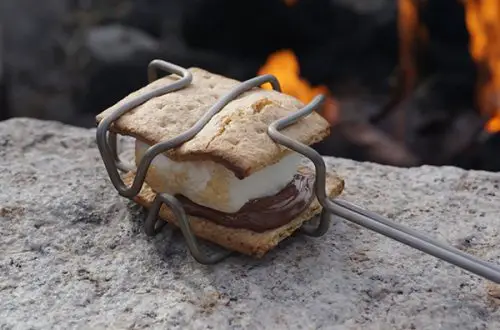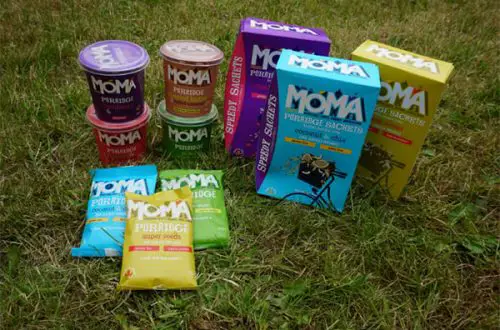Meal Planning for Backpacking
Table of Contents
When you’re out in the wild, the only thing that you have to support yourself, is you. Yes, I know, that sounds pretty intense and that’s because it is intense. Backpacking allows you to have the freedom to explore the wilderness in its natural state with you simply enjoying the scenery and views. Regardless of the type of backpacking trip you’re going on, whether it’s a day hike or a longer backpacking trip, you need to make sure you’re prepared.
Looking for other cooking gear? Check out these other popular cooking products:
Now, of course, you’re going to have the essentials with you such as a tent, sleeping bag and cooking supplies but what about your food? Well, if you’re stuck on what you need to bring with you for meals, I’ve got everything you need know about meal plans.
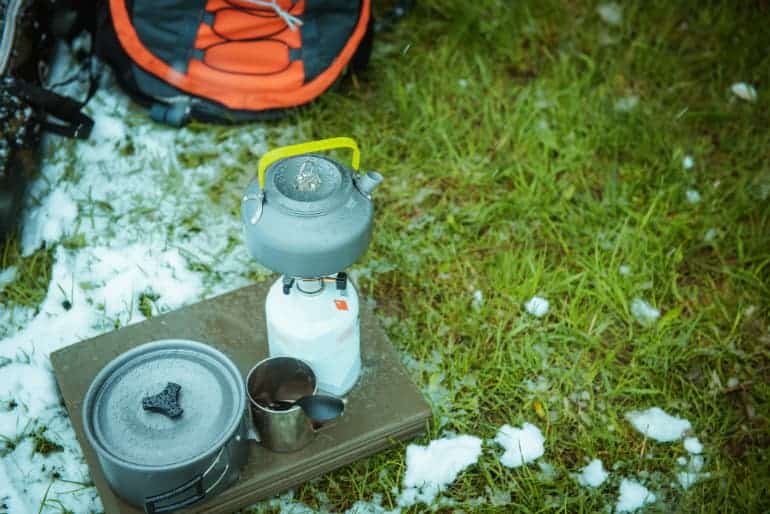
Why meal plan?
Backpacking is very different than camping. When you’re camping, you don’t have to be as strict with your meal plans. Instead, you can buy a wide range of food, shove it into the cooler and decide what you want to eat right before cooking it. However, with backpacking, it’s very different.
Sadly, you don’t have a car where you can store all your dry and wet foods in, nor do you have any trunk space as a backpacker. Of course, you have space for food but everything that you’re eating is going into your backpack, thus, you’re more mindful when it comes to weight. For car camping, you can bring heavy bags of apples and potatoes, however, when you’re backpacking, this may not be the smartest idea.
In addition, when you’re backpacking, you’re constantly moving. You’ll be spending more of your day hiking the trails which means you’re going to be using up a lot of valuable energy. When you’re out in the middle of nowhere, having that energy could be a lifesaver. And where do you get your energy from? From the food you carry with you.
So, meal planning is crucial to ensure that you’re getting the right amount of vitamins, minerals, proteins, and carbs to push you through your backpacking adventure. If you’re a beginner, you’ll definitely want to pay attention to this guide as we’re going to tell you exactly what you need.
Short hikes vs. long hikes
Now, the food you’ll be bringing with you will vary greatly based on the duration of your hike. If you’re going on a multi-day trek, then you’re going to be needing a more detailed and advanced meal plan to ensure that your energy levels remain high throughout. Whereas, if you’re going for day hikes, then you may only need a couple of energy bars to get you through the hike.
Thus, when you’re going to plan your meal, think about the duration and intensity of your hike. Naturally, if you’re going through tough terrain, you’ll be using up more energy than if you’re walking on a flat surface. So, these are all aspects that you need to remember in order to make sure you stay in an optimal physical and mental condition.
Do calories matter?
In short, yes. Of course, you can eyeball the amount of food you’ll need but if you’re going on long hikes then you won’t want to be stuck with carrying around extra meals when you don’t have to.
If you pack too little food, well, then you’re going to have to ration and no one wants to end up doing that. So, we’re left with calorie counting which is one of the best ways to help you figure out how much food you need per meal.
But, the question now is, how many calories do you need? Well, firstly, you need to take a look at your baseline metabolism. Then, look at the terrain you’ll be hiking on. Depending on the level of difficulty and duration, you’ll want to increase the calories appropriately.
Usually, hikers average around 3,500 calories per day for hikes up to 500 miles. Then, if you’re planning on hiking longer than 500 miles, you’ll want to bump up your calorie intake to keep your energy levels up. Of course, everyone is different and has a different metabolism so the calorie intake will need some tweaking to suit your body type.
Consider the season
You may not have thought about this because most people wouldn’t, but seasons play a very important role in meal planning. On multi-day hikes during late fall and winter, you’re going to have to eat more food since you’re burning more energy to keep warm. If you’re planning on hiking in colder seasons, think about keeping essential energy-based foods in pockets that are close to your body to make sure that it won’t freeze.
Whereas, in the summer, you’re needs are going to be shifted. During warm months, hydration is going to be something that you’re going to have to focus on. Though you’ll need to carry enough food with you, you’re going to also have to carry extra water and, in addition, electrolytes to keep your salt levels within a normal range.
The best foods to take with you on a backpacking trip
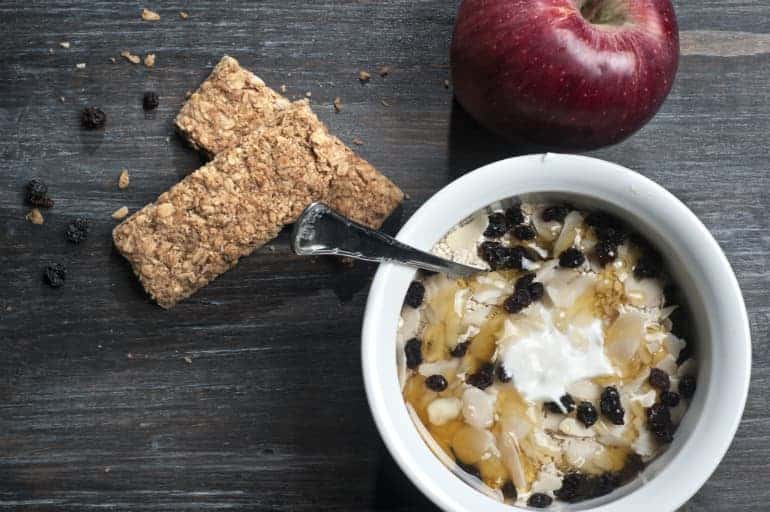
Now that you have a better idea of what meal planning really entails, you may be thinking, “well, then what are the best foods to take?” Well, here are some of the best foods to take with you on your backpacking trip.
Lightweight
Remember, everything you’re going to be taking with you is going to be on your back. Focus on lightweight food which will fit perfectly in your backpack, but won’t weigh you down at the same time. There are plenty of lightweight foods which give you all the energy you need without the weight.
Low glycemic index (GI)
One thing you don’t want to happen is for your sugar levels to spike. If that happens, you’ll get a rush of energy and then a sharp crash. Instead, look for foods with a low glycemic index which release energy slowly over a certain period of time. Foods with low glycemic levels are whole grain carbohydrates, brown rice, steel-cut oats, berries, and leafy greens.
Easy to prepare
You’re going to have everything in your backpack, so though you may be feeling like eating fresh blueberry muffins, unless you pre-made them, you’re out of luck. With your limited amount of equipment, the food you’re going to cook is going to be very simple, even if you’re carrying a fairly small firebox stove.
Eat what you like
It’s important that you truly enjoy your backpacking experience. Don’t opt for foods that you don’t like eating just because they’re lightweight. Pick foods that have a happy medium between weight and taste. Your meals will be a huge part of your day and if you don’t like the food, you’re going to have a long trip.
Dehydrated foods
Dehydrated foods are the most popular foods that hikers take with them on long hikes. They’re easy to pack and throw into your backpack. Plus, they come in a variety of different meals such as instant rice, soups, chilis and noodles. So, you won’t get bored. To bring the meal to life all you need is hot water.
Add some spice
When you’re on long hikes, spices can really help you out. After the first couple of days, you’re going to get bored of eating rice or noodles. But, when you have a couple of different spices with you, you can create a completely different dish. See, cooking can be fun when you’re backpacking.
Canned foods
These are only ideal for day hikes as they can add weight to your backpack very quickly. Though, they make great meals if you’re tired of eating dehydrated foods. But do keep in mind that whatever you bring to the environment, you need to take out and canned foods create a lot of unnecessary waste.
Don’t forget water
Though you have enough water to drink during your trip did you think about the water you’re going to need to cook? Some meals will need water, especially if you’re going to be boiling rice or pasta. In addition, you’re going to have to clean your kitchen equipment as well and that’ll use up water. If you don’t want to lug around bottles of water, opt for water purifying tablets or filtration systems that are lightweight and reduce your carry load.
Other things to consider
There are a couple other things you need to consider when meal planning. These considerations will also help you figure out the type of meals you’ll be taking along with you on your trip.
Flavored beverages
When you wake up in the morning or are taking a mid-afternoon break, having a warm or cold beverage can do the trick. After drinking nothing but water, you may want to try something different. There are powdered drink mixes that you can bring along with you or even hot chocolate mixes as well.
Fuel
When going backpacking, you’re going to need to bring a small stove with you for meals and warm beverages if you’re a coffee or tea lover. But in order to use the stove, you’re going to need fuel which can pack on a couple of pounds to your backpack.
So, you need to factor in how many times you’re going to be using the stove, that way, you know exactly how much fuel you need. Of course, this will depend on the duration of your hike, if you’re alone or with a partner and the stove itself.
Cost
When it comes to cost, typically when revolving around backpacking, you pay for convenience and ease. If you want dehydrated meals, they’re going to cost you more because they’re delicious, easy to cook, and don’t require heavy cleanup.
Of course, you can save yourself a couple of dollars per meal by making your own dehydrated meals instead. Though, you’ll have to start ahead of your trip as it’s quite time-consuming.
Fresh foods
Everyone loves having some fresh food with them while backpacking like apples and oranges. It adds a freshness to the early mornings and late afternoons. Though, fresh fruits, for example, have a food calorie count which means they’re not great for giving you long-term energy. Instead, opt for carrots and snap peas as they’re healthy but also carry more bulk to them.
Leave no trace
You’re backpacking because you love nature, right? If not, then you would have rather have spent your weekend in an all-inclusive hotel. But, you’re wanting to go right into nature.
With that being said, you should focus on making sure you don’t leave your mark in the environment you’re hiking in. Take all your trash with you, including any food you’re not eating. This is very important as we do not want to do any further damage to nature. We’re simply visitors.
Food Storage
The last thing you want in the middle of the night is a wild animal going through your food, ransacking everything you have – that’s when you have a real problem at hand. Proper food storage is an absolute necessity when backpacking.
Wild animals are extremely smart and can smell out food from long distances. However, there are some food storage bags which do an amazing job of closing off the scent of food.
Meal plan suggestions
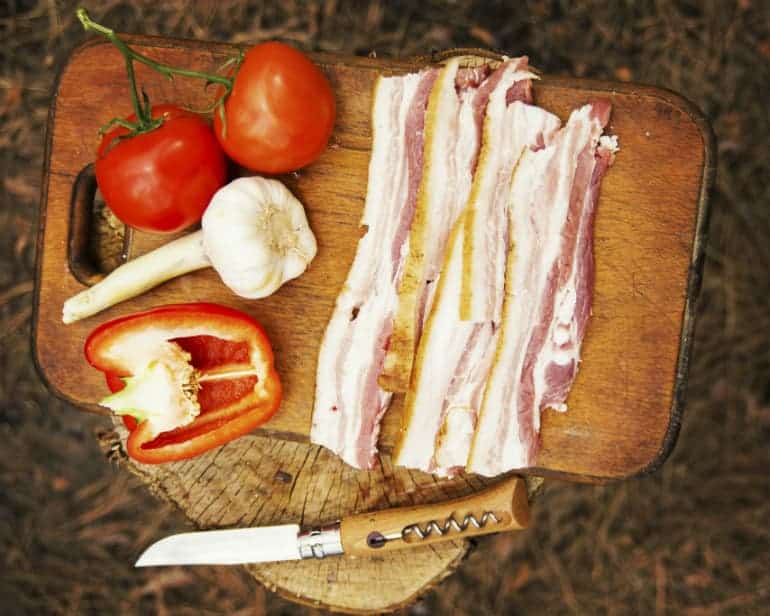
Now that you have a better idea of what it takes in order to properly meal plan, and we know, there’s a lot to consider, it’s time you looked at some examples of meal plans which hikers use on their trips. That way, you actually see that it’s not as complicated as it may look.
Breakfast
Breakfast is the most important meal of the day. It’s what gives you the energy and boost you need to get going. So, don’t ignore the importance of breakfast. You’ll want your breakfast to be energizing, quick, and nutritious as you won’t have a lot of time.
During the morning, you’ll be packing up camp and getting ready for the day ahead. Though, depending on the amount of time you have, your breakfast can range from an energy bar to pancakes and eggs.
Here are some of the most common and favorite breakfast options for hikers:
- Instant hot cereals
- Dehydrated eggs
- Breakfast bars
- Dry cereal
- Dried fruits
- Granola
- Pancakes
- Nuts & Seeds
- Pastries
Most hikers start off with a cup of coffee or tea, talk about their day and then prepare breakfast. Like we said above, your breakfast can range from simple to luxurious depending on what you like to eat and the time you have to prepare it.
If you’re looking for more calories, eat more nuts in the morning. Though, instant oatmeal with dried fruits and granola seem to do the trick for many campers. Then, on special mornings, you can bring out the eggs and pancakes.
Before your trip, make sure your breakfasts are packaged into individuals servings. That way, you don’t have to waste time measuring and worrying if you’ll have enough oatmeal to last you the rest of the trip.
Popular choices: instant oatmeal/cereals, breakfast bars, granola, nuts & seeds
Lunch
When you’re stopping for lunch, it’s best that you don’t take too long of a break. You’re right in the middle of the day and getting through a lot of ground. Setting up the stove, preparing the meal and cleaning up will only waste sunlight.
Instead, it’s better to eat something easy and quick, that way, it’ll give you the energy you need to push through until dinner time. So, for lunchtime, you need to focus on foods which are calorie-rich and will give you the energy you need to continue. In this case, you can opt for high energy snacks.
- Jerky
- Pita chips
- Whole Wheat crackers
- Wasabi peas
- Candy
- Chips
- Dried fruits
- Almonds
- Chocolate
- Avocado
- Bagels
- Energy bars
- Cookies
Since you’re walking so much, your metabolism isn’t going to be the same as it is when you’re sitting at the office Monday to Friday. Instead, you’re going to be burning fat very easily and quickly. This is why you can get away with eating these types of foods.
Popular choices: jerky, chips, candy, almonds, chocolate
Dinner
Now, you may think that dinner is going to be similar to the traditional dinners we usually have when we’re at home. However, everything seems to change when you’re in the backcountry. Though typically you’re used to eating dinner at 7 pm, when you’re hiking, you’ll find that most hikers eat dinner around 3-4 pm. That way, they get the energy they need to take them through the rest of the day.
When eating dinner, your main focus is getting a nutritious meal into your body. Now, you can make yourself a fancy dinner but you may also be too tired to put in much effort and opt for a dehydrated meal instead. This is the meal where you can reward yourself so, you can opt for meals such as:
- Instant noodles
- Dehydrated meals
- Couscous
- Macaroni and cheese
- Potatoes
- Canned tuna
- Instant Soups
If you’re using dehydrated meals this is the perfect opportunity to try out your spices that can jazz up any one of these meals and make it into something new. If you have time prior to your hike, you can make your own dehydrated meals which give you more power to try different meals and personalize them.
Popular choices: dehydrated meals, noodles, rice, soup
Now that you have an idea of what you can pack along with you for meals, it’s important to also look at how you should be packing the food inside your backpack.
Packing your food

Many people don’t think about the importance of packing their packs properly. However, it’s extremely frustrating when you’re hiking and want a quick snack but realize that they’re located at the bottom of your bag. Then, getting something to eat becomes an entirely different story.
Now, you’ll have to start removing things from your bag, wasting time on trying to access your food. It shouldn’t be that hard to grab an energy bar.
Taking the time to thoroughly plan and organize your meals can save you a lot of hassle and time, both things you don’t want to lose when you’re in the backcountry.
Label everything
No one wants to get powdered milk and powdered potatoes mixed up, especially when you’re really hungry. It’s important to make sure that you label everything. If you’re repackaging your foods, it’s essential.
When labelling your foods make sure you include what is it, calories, cooking instructions, and the package date. That way, the minute you have a package of food in your hand you know exactly what it is and how to cook it. This will eliminate any guessing and get food into you as quickly as possible.
Individually pack every meal
You don’t want to make the mistake of having one giant bag of powdered potatoes which you scoop each meal from. Firstly, you run the risk of eating too much one day and having to ration for the rest of the trip. Secondly, you’re able to have a more organized meal plan.
You’ll make the perfect amount of meals, plus, you won’t have to survive on energy bars if you go through the food too quickly. Sometimes our eyes can be bigger than our stomachs and this is something you don’t want to risk when you’re backpacking.
Food storage
If you’re going to be hiking in the backcountry, you already know that you’re not the only one there. Most likely you’re going to have your encounters with wild animals, however, a deer is a huge difference than a bear. You’ll want to prevent any unfriendly encounters by making sure your food is properly stored away in a bear canister.
Even if there aren’t any bears in the area, raccoons and rodents can easily get into your food supply. A bear canister can protect the food from animals
Organize your backpack
When packing your backpack, you’ll want to keep everything properly organized. There’s no point keeping snacks at the bottom of your bag as that’s what you’ll be eating throughout the day. So, properly place your food in your bag. Meals such as dinner don’t need to be at the top, however, lunch should be easily reachable.
Storing your food
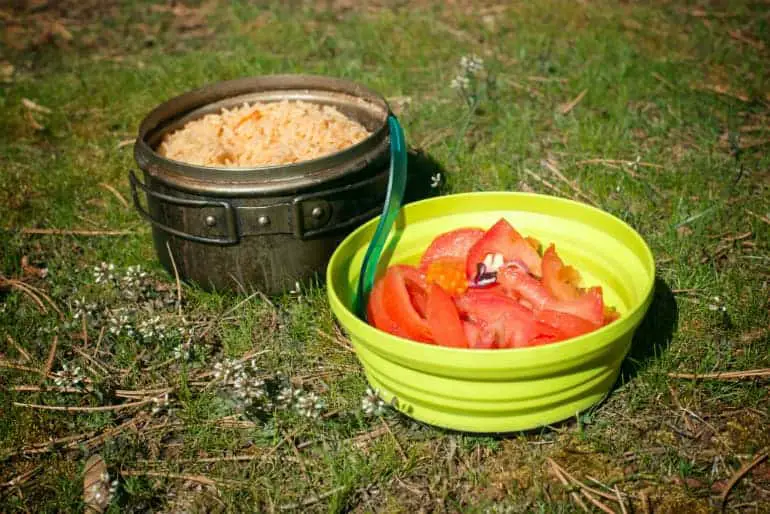
When you’re in the backcountry, there are going to be wild animals. Remember, you’re just a visitor. This means you’re going to have to keep your food safe. When backpacking there aren’t any rules or regulations when it comes to storing food, however, there are three methods which are commonly used:
- Hanging your food from a tree or pole
- Storing your food in a bear canister or bear bag
- Storing your food in a metal food locker
Metal food lockers
Depending on where you’re going to be hiking, some backcountry campsites offer campers large metal bear-proof boxes which allow you to store your food and trash. They can be individual boxes or communal boxes. If it’s the latter, there’s no guarantee that your things are safe.
In addition, you need to make sure that the latch is properly secured so bears can’t enter it. If they can open it, your food is going to be eaten.
Bear canisters
Bear Canisters are hard-shell plastic cylinders that come with a lid which you screw on and off. Some require that you use a screwdriver while others you can remove the lid simply with your hands. They’re able to fit into most backpacks and range in a variety of different sizes. So, you have the option to choose either a larger or smaller one depending on how much food you’re bringing and if you’re camping alone or not.
If the area you’re camping in recommends you use a bear canister, then use one. If you don’t have one and you’re stopped by a ranger, you could be handed a large fine. If you don’t have one, some parks will offer you the ability to rent one. However, it’s always best to be prepared and not take any chances when it comes to this. These canisters will save your food from bears, raccoons, and rodents.
Advantages:
- Wild animals are unable to open them
- You’re able to leave them on the ground rather than hanging them from a tree
- When the lid is screwed on, you can use them as a seat
- They can come in clear plastic for better visibility
- You can place reflective tape on it for better visibility at night
Disadvantages:
- They can be heavy and bulky, weighing around 2 -3 pounds
Bear bags
If you don’t fancy a bear canister, then you can opt for a bear bag to protect your food. Bear bags are made of high-density polyethene which is incredibly challenging to open. In fact, most bears cannot open this bag.
The aluminium line that you can purchase separately aids in preventing the bear from crushing the contents inside. You can store your food in odourless plastic bags which are also waterproof. There are specific models for other animals as well such as mice and rodents, however, if you’re in the backcountry, you’ll want one that’s bear-proof.
Advantages:
- They’re lightweight
- They’re highly compact
Disadvantages:
- They’re not accepted by all national parks as bear-proof bags
- Animals are able to crush the bag or carry it away
- You’ll have to tie them up in a tree or off of a pole for better protection
Hanging food
Hanging your food is another method which is meant to protect your food from bears and other animals. You’ll want to hang your food above a tree line or if you’re in desert-like areas, place it in shrubs. To hang your food, you’ll usually suspend it with either a rope or cable. Some camps have bear poles which come with large hooks to attach your bag too.
Advantages:
- You don’t need to invest in any specialize equipment. A simple rope will do the trick
Disadvantages:
- Hanging food can be very time-consuming and challenging.
- Some bears already know how to pull on the ropes to get the food down
- You need a treeline in order to hang it
Send yourself a resupply box
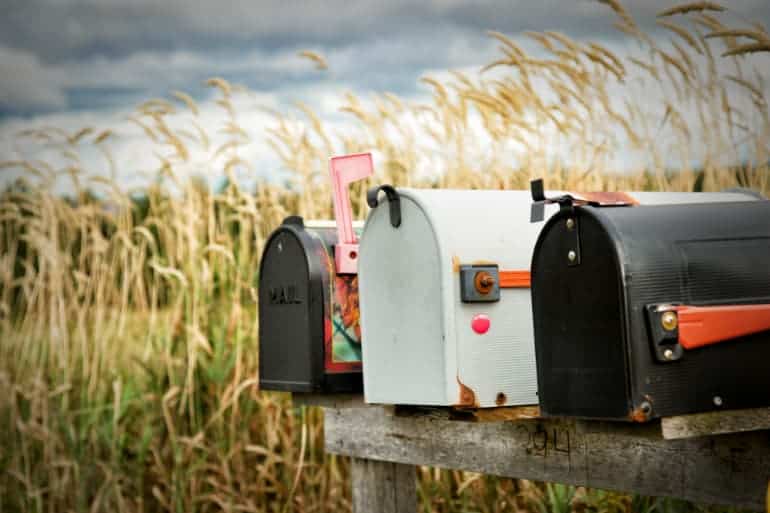
Now, we don’t want to give you high hopes, naturally, this will depend on the route you’re planning on taking and the duration of your hike. Though if you’re going for a multi-day hike, you may be able to send yourself a resupply box.
A resupply box is a great option to reduce the weight of your backpack. When you’ve decided on your trail, research it and see when you’re able to send a resupply box. Most trails have a common area where there are amenities and a post office for hikers.
It’s your responsibility to see the limitations that may exist. What company can you send your box with? Can you get your box on a Sunday? What are the costs? Don’t completely rely on guidebook information to tell you everything you need to know as rules can easily change. If you can, call the base camp ahead of time to make sure you’re able to send a resupply box.
When you’re packing your resupply box, make sure you pack it carefully as it’ll go through the regular post. Your items can easily be squished or crushed. This is why it’s better to use a plastic box instead of a cardboard box as you have a higher chance of keeping your food properly protected from the elements.
Conclusion
There is lots to consider when meal planning for backpacking but like anything, once you do it once or twice and learn from your mistakes, you’ll then become a professional at creating your own meal plan.
You may have dietary restrictions to consider as well which will be another obstacle that you’ll need to overcome. However, once you put in all the effort ahead of your backpacking adventure, the minute you’re on the trail, you’ll have completely forgotten about the meal planning.
With meal planning, you have the power to decide if you want to make your own meals or to purchase them. You have the power to decide what you’re going to eat on the trip. Essentially, everything is in your own hands.
So, take this opportunity to enjoy planning your trip and making sure you get all the nutrients you need to get you to your final destination. Now that you know everything there is about meal planning, it’s time you got started in planning your hiking adventure!


